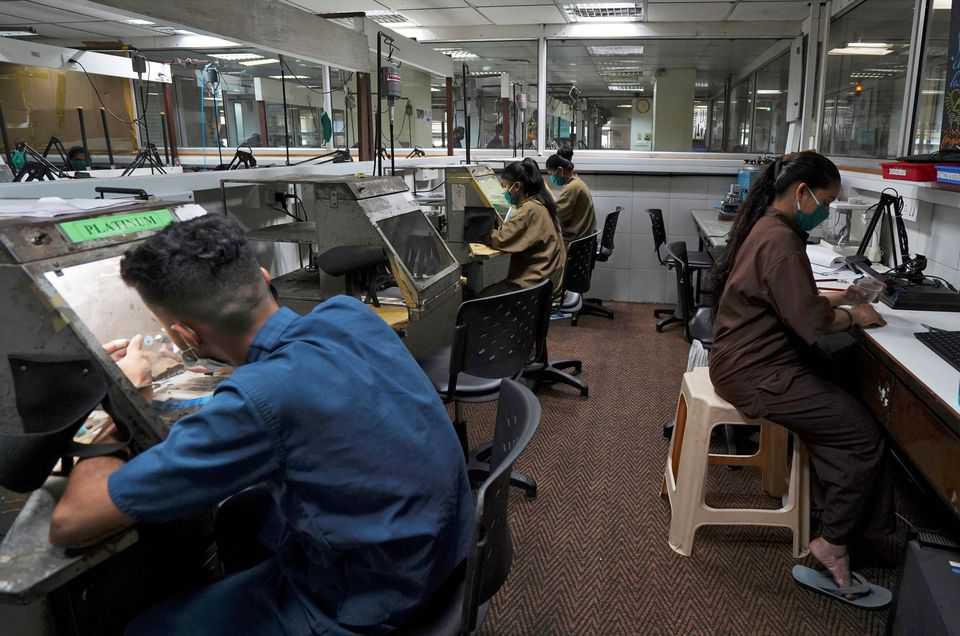India's female labour participation rate falls to 16.1% as pandemic hits jobs

Image: Collected
Female labour participation rate in India fell to 16.1% during the July-September 2020 quarter, the lowest among the major economies, a government report said, reflecting the impact of pandemic and a widening job crisis.
The percentage of women in the labour force had fallen to a record low of 15.5% during the April-June 2020 quarter, when India imposed strict lockdown to curb the spread of COVID-19 virus, said the report, released late Monday by the Ministry of Statistics.
According to World Bank estimates, India has one of the lowest female labour force participation rates in the world. Less than a third of women – defined in the report as 15 or older – are working or actively looking for a job.
The female labour participation rate in India had fallen to 20.3% in 2019 from more than 26% in 2005, according to World Bank estimates, compared with 30.5% in neighbouring Bangladesh and 33.7% in Sri Lanka.
Most employed women in India are in low-skilled work, such as farm and factory labour and domestic help, sectors that have been hit hard by the pandemic. read more
The unemployment rate among women touched 15.8%, compared with 12.6% among male workers during three months that ended in September 2020, the latest quarter for which data was released.
Most economic activities have resumed in the country after state governments eased pandemic curbs in response to a decline in coronavirus infections from May peaks. That is likely to help create more jobs for all workers, government officials said.
India’s July unemployment rate fell to 6.95% from the June figure of 9.17%, data from the Centre for Monitoring Indian Economy (CMIE) showed on Monday.
Many private economists have warned that the slow pace of vaccination and a slump in consumer demand could hurt growth prospects, and the economy is unlikely to attain its pre-COVID size before March 2022.
Asia's third-largest economy, which shrunk 7.3% in the fiscal year ending in March, the worst recession in last seven decades, is expected to grow at 8-9% year-on-year in the current fiscal year.
The percentage of women in the labour force had fallen to a record low of 15.5% during the April-June 2020 quarter, when India imposed strict lockdown to curb the spread of COVID-19 virus, said the report, released late Monday by the Ministry of Statistics.
According to World Bank estimates, India has one of the lowest female labour force participation rates in the world. Less than a third of women – defined in the report as 15 or older – are working or actively looking for a job.
The female labour participation rate in India had fallen to 20.3% in 2019 from more than 26% in 2005, according to World Bank estimates, compared with 30.5% in neighbouring Bangladesh and 33.7% in Sri Lanka.
Most employed women in India are in low-skilled work, such as farm and factory labour and domestic help, sectors that have been hit hard by the pandemic. read more
The unemployment rate among women touched 15.8%, compared with 12.6% among male workers during three months that ended in September 2020, the latest quarter for which data was released.
Most economic activities have resumed in the country after state governments eased pandemic curbs in response to a decline in coronavirus infections from May peaks. That is likely to help create more jobs for all workers, government officials said.
India’s July unemployment rate fell to 6.95% from the June figure of 9.17%, data from the Centre for Monitoring Indian Economy (CMIE) showed on Monday.
Many private economists have warned that the slow pace of vaccination and a slump in consumer demand could hurt growth prospects, and the economy is unlikely to attain its pre-COVID size before March 2022.
Asia's third-largest economy, which shrunk 7.3% in the fiscal year ending in March, the worst recession in last seven decades, is expected to grow at 8-9% year-on-year in the current fiscal year.
Source: https://www.reuters.com
Previous Story
- Emirates issues new travel advisory for flights from...
- UAE: India, Pakistan, Bangladesh flight suspension extended until...
- India may extend anti-dumping duty on Bangladeshi jute...
- World Environment Day: These entrepreneurs are leading the...
- Bangladesh rises to end up being South Asia's...
- South Asia Should Pay Attention to Its Standout...
- What India can study from Bangladesh about closing...
- Brunei imposes int'l travel ban to 4 more...